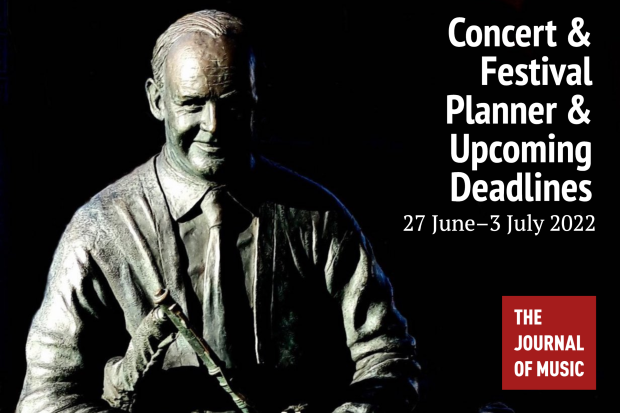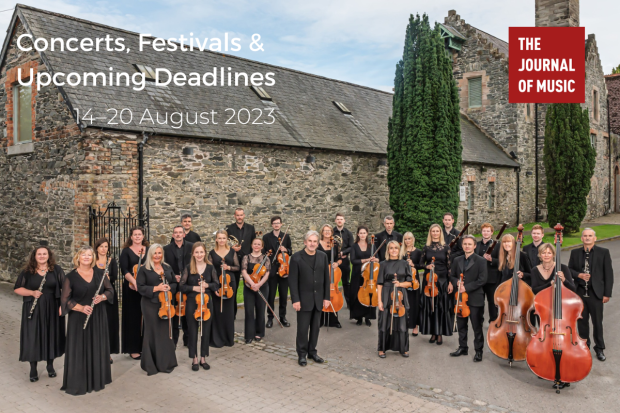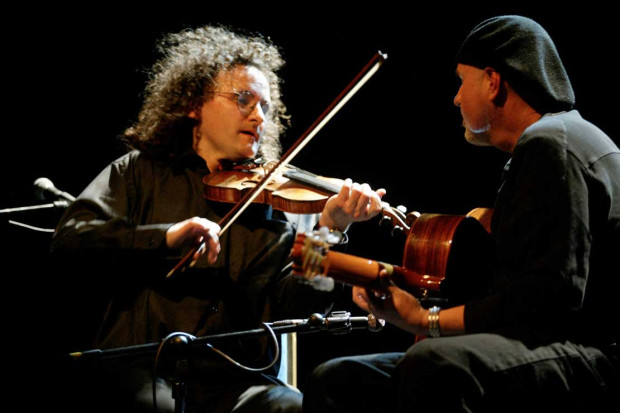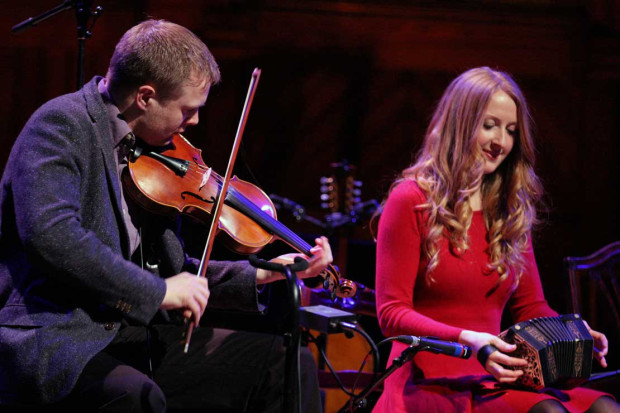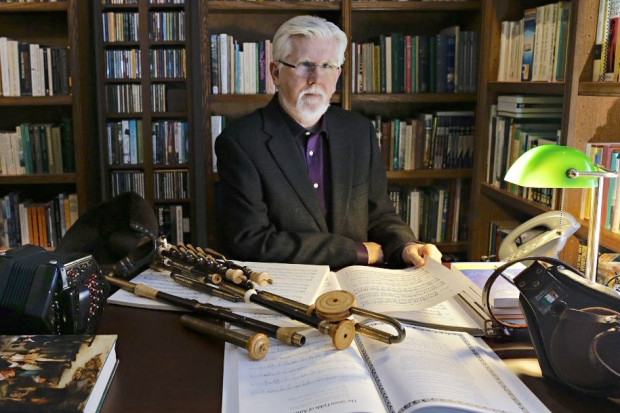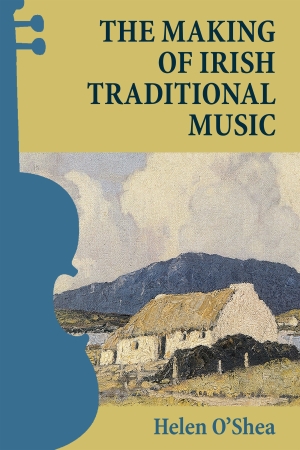
The Making of Irish Traditional Music
One of the duties of musicology is that it must look at the way we structure our musical practice – socially, conceptually, culturally and musically (if you can really separate any of those agendas) – and express this in a way which explains and critiques our practices, a critique which can develop the artistry and inclusivity of this music. Critique is a fundamental necessity for the survival of our music in a contemporary context and academic work such as this should play a role in that.
Does it? The answer of course is yes and no. Helen O’Shea is an ethnomusicologist/new musicologist and fiddler from Australia with some distant Irish ancestry who engaged most of the research for her book in County Clare and particularly east County Clare. The book engages four specific areas: regional style; the engenderment of the tradition; festivals; and the session – aside from a long pre-amble essentially accounting for the history of the tradition over the past two centuries. The book suffers from a lack of a substantial conclusion and cohesive parameters to bring the threads of the work together. The ambition of the book is too wide for a text of under 150 pages and its resources are mainly limited to those that are most relevant to O’Shea’s own personal and musical circumstance. Not a bad thing in itself, but perhaps it could be more explicitly recognised to give the book a more cohesive structure.
The first couple of chapters demonstrate how the tradition has been shaped historically through the development of cultural and, more latterly, explicitly political nationalism. It is easy in such contexts as this to use the paradigms of the tradition that should be questioned in a more thorough manner. For instance, O’Shea talks about the importance of families in Ireland being in receipt of ‘instruments, gramophones and records’ from relatives in America (p. 27). This ignores the fact that the spread of such goods was more certainly facilitated by the establishment of commercial agriculture in the late nineteenth century and the commodification of music practices in cheap mass-produced instruments and licensed American recordings manufactured in Britain, all disseminated through the new rural framework of post-offices and shops. Other paradigms are repeated without critical examination, such as the overemphasis of the role of the Church and the 1935 Dance Halls Act in the demise of the traditional contexts for music and dance (p. 33), ignoring the change in tastes facilitated again through growing wealth and exposure to other musics in an increasingly mass-mediated world. In this section she also relies too heavily and uncritically on Reg Hall’s writing concerning pre-twentieth century traditional music-making and also her own perception of what the nineteenth century would have sounded like. This perception is obviously shaped by her own aesthetic, as we see when she speaks of that era’s ‘qualities valued in its continuing rural practice such as “grainier” timbre, melodic and rhythmic variation, and the “telling” of a song.’ (p. 18) Such an aesthetic agenda is also evident in her more poetic accounts of performances (I think I am the only musicologist left who still likes the blunt tool of transcription) writing, for instance, about Mike McGoldrick’s ‘harmonically restless style’ (p. 51).
Perhaps the most satisfactory aspect of the book is her critique of the paradigm of regional styles in the context of east County Clare. She effectively demonstrates the modernity of the conception of style and how it is linked imaginatively to ideas of landscape, authenticity and nostalgia, but without extensively linking it into the sound itself. I am sure that an ethnomusicologist from a corner of the world that didn’t know Martin Hayes wouldn’t have much of an idea of what the music would sound like from reading this, let alone what is significant about the way it sounds and how the sounds are produced. Later in the book she critiques the engenderment of the tradition and starts to ask some really interesting questions, illustrating the smug satisfaction that relegates sexist attitudes to historical practice, and she shows that so-called gender-neutral contexts for traditional music are far from that and suggests that this is not solely a reflection of cultural norms.
However, it is in the sections focusing on the Willie Clancy Summer School and in the discussion of the session that O’Shea perhaps becomes most controversial. Here she critiques the week-long school and festival as a site for pilgrimage, and an unsatisfactory one at that, and the idealisation of the session. These critiques are valuable as a perspective on these events, but the perspective is narrow and should be explicitly recognised as such. The communities that inform the majority of O’Shea’s work are Australian musicians who are holidaying or have migrated to Ireland and musicians from the virtual internet communities. These two overlapping communities provide the meat in the discussions of perceptions of authenticity, but it isn’t realised that their interaction with local musicians and their engagements with the music are also shaped by their own cultural baggage. I am no expert, but Australian conceptions of Irishness must be peculiar and coloured by the individual relationship of the two places. From reading this work we would be excused in imagining festivals such as the Willie Clancy Summer School as primarily sites for non-national musicians to engage in a journey into the tradition in order to interact with ‘the real thing’. Certainly this does go on, but it is only a small part of the complex social scene around Miltown Malbay in the first week of July. The majority of people at the school are Irish, often from other ‘holy’ or perhaps ‘unholy’ sites for the tradition. Certainly Miltown Malbay is a place of pilgrimage, but it is one for a very ecumenical congregation. Similarly, O’Shea’s writing on the session (previously seen in her article for The Journal of the Society of Musicology in Ireland, vol. 4) is essentially a reaction, shared by many who come as adults to the tradition, to the realisation that the session is not an egalitarian performance context but a hierarchial social structure which is rarely about just playing tunes together.
O’Shea’s book is important. Its flaws come from trying to present too much, and much of the content of the book screams for more detailed academic attention. There is a sense of unease through the publication which is perhaps related to the failure of many aspects of the tradition to live up to its imagining by invaluable interlopers like O’Shea. The book demonstrates from a unique perspective some fundamental issues for the tradition. These issues come from a new world where this music and its culture are pressed against other ethnicities and O’Shea highlights the inadequacies of the strategies that have historically created identity for the music in this contemporary environment. The sleeve-note finishes with the claim that ‘The book concludes that a view of Irish traditional music as expressive of an ethnically pure, geographically bound, masculine, national culture is an inadequate basis for a multi-ethnic Irish society.’ The challenge is for us to imagine a music that is.
Published on 1 June 2009
Niall Keegan is a traditional flute player and Associate Director at the Irish World Academy of Music and Dance, University of Limerick.












